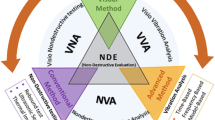Abstract
Numerical control (NC) turret constitutes a key component for NC lathe. Due to its strategic role in the successful machining, it is important to monitor the NC turret conditions to recognize the need for maintenance, thereby avoiding unplanned downtime. Signal segmentation is a very basic work in such a multi-action system condition monitoring. This paper borrows the idea of speech segmentation and proposes a simple vibration segmentation approach to obtain action-known segments. In this approach, we formulate a segment optimization problem by a new fitness function, and present a three-layer genetic algorithm to decouple the problem. The advantage of the approach is the little requirement of expert knowledge, which is friendly to users. The case study of NC turret from the experiment bench uses fourfold cross-validation to indicate that the approach has a good performance on segment production, action recognition, and the two combination. The ablation tests demonstrate the contribution of the component of the approach.










Similar content being viewed by others
References
Sun, B., Balakrishnan, N., Chen, F., Xu, B., Yang, Z., Liu, Y.: Reliability evaluation of the servo turret with accurate failure data and interval censored data based on em algorithm. J. Mech. Sci. Technol. 34(4), 1503–1513 (2020)
Popescu, T.D., Aiordachioaie, D.: Fault detection of rolling element bearings using optimal segmentation of vibrating signals. Mech. Syst. Signal Process. 116, 370–391 (2019)
Kim, S., Choi, J.H.: Convolutional neural network for gear fault diagnosis based on signal segmentation approach. Struct. Health Monit. 18(5–6), 1401–1415 (2019)
Klocke, F., Döbbeler, B., Goetz, S., Arruda, J.: Data segmentation of effective power signals in the hobbing process. Procedia CIRP 79, 45–50 (2019)
Bombiński, S., Blazejak, K., Nejman, M., Jemielniak, K.: Sensor signal segmentation for tool condition monitoring. Procedia CIRP 46, 155–160 (2016)
Bhattacharyya, P., Sengupta, D., Mukhopadhyay, S.: Cutting force-based real-time estimation of tool wear in face milling using a combination of signal processing techniques. Mech. Syst. Signal Process. 21(6), 2665–2683 (2007)
Martínez-González, B., Pardo, J.M., Echeverry-Correa, J.D., San-Segundo, R.: Spatial features selection for unsupervised speaker segmentation and clustering. Expert Syst. Appl. 73, 27–42 (2017)
Jiang, N., Liu, T.: An improved speech segmentation and clustering algorithm based on SOM and k-means. Math. Probl. Eng. 2020 (2020)
Darabkh, K.A., Haddad, L., Sweidan, S.Z., Hawa, M., Saifan, R., Alnabelsi, S.H.: An efficient speech recognition system for arm-disabled students based on isolated words. Comput. Appl. Eng. Educ. 26(2), 285–301 (2018)
Li, Q., Zheng, J., Tsai, A., Zhou, Q.: Robust endpoint detection and energy normalization for real-time speech and speaker recognition. IEEE Trans. Speech Audio Process 10(3), 146–157 (2002)
Zhang, T., Shao, Y., Wu, Y., Geng, Y., Fan, L.: An overview of speech endpoint detection algorithms. Appl. Acoust. 160, 107133 (2020)
Colonna, J.G., Cristo, M., Salvatierra Júnior, M., Nakamura, E.F.: An incremental technique for real-time bioacoustic signal segmentation. Expert Syst. Appl. 42(21), 7367–7374 (2015)
Hamdia, K.M., Zhuang, X., Rabczuk, T.: An efficient optimization approach for designing machine learning models based on genetic algorithm. Neural Comput. Appl. 33(6), 1923–1933 (2021)
Katoch, S., Chauhan, S.S., Kumar, V.: A review on genetic algorithm: past, present, and future. Multimed Tools Appl. 80, 1–36 (2020)
Wang, T.Y., Chiang, H.M.: Fuzzy support vector machine for multi-class text categorization. Inf. Process. Manag. 43(4), 914–929 (2007)
Muthukrishnan, R., Rohini, R.: LASSO: a feature selection technique in predictive modeling for machine learning. In: IEEE International Conference on Advanced Computing Application, pp. 18–20. IEEE (2016)
Somvanshi, M., Chavan, P., Tambade, S., Shinde, S.V.: A review of machine learning techniques using decision tree and support vector machine. In: International Conference on Computing Communication Control and Automation, pp. 1–7. IEEE (2016)
Razi-Kazemi, A.A., Niayesh, K.: Condition monitoring of high voltage circuit breakers: past to future. IEEE Trans. Power Deliv. 36(2), 740–750 (2020)
Acknowledgements
This work was supported by National Natural Science Foundation of China [Grant Number 51975249]; Key Research and Development Plan of Jilin Province [Grant Number 20190302017GX]; and China Scholarship Council [Grant Number 202006170069].
Author information
Authors and Affiliations
Corresponding author
Additional information
Publisher's Note
Springer Nature remains neutral with regard to jurisdictional claims in published maps and institutional affiliations.
Supplementary Information
Below is the link to the electronic supplementary material.
Rights and permissions
About this article
Cite this article
Hu, W., Yang, Z., Chen, C. et al. A vibration segmentation approach for the multi-action system of numerical control turret. SIViP 16, 489–496 (2022). https://doi.org/10.1007/s11760-021-01990-7
Received:
Revised:
Accepted:
Published:
Issue Date:
DOI: https://doi.org/10.1007/s11760-021-01990-7




